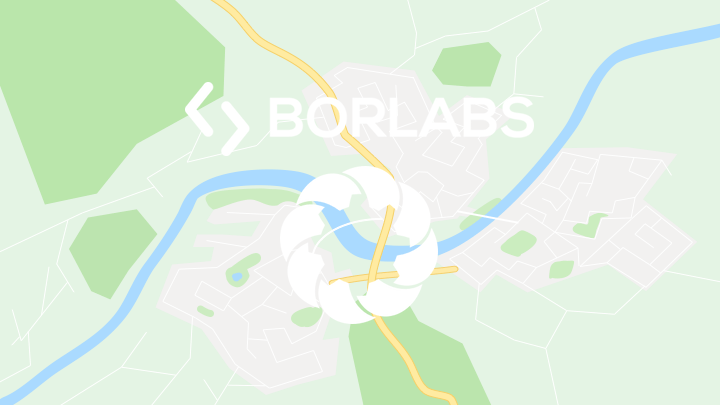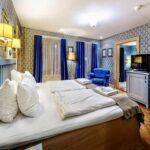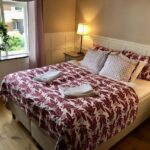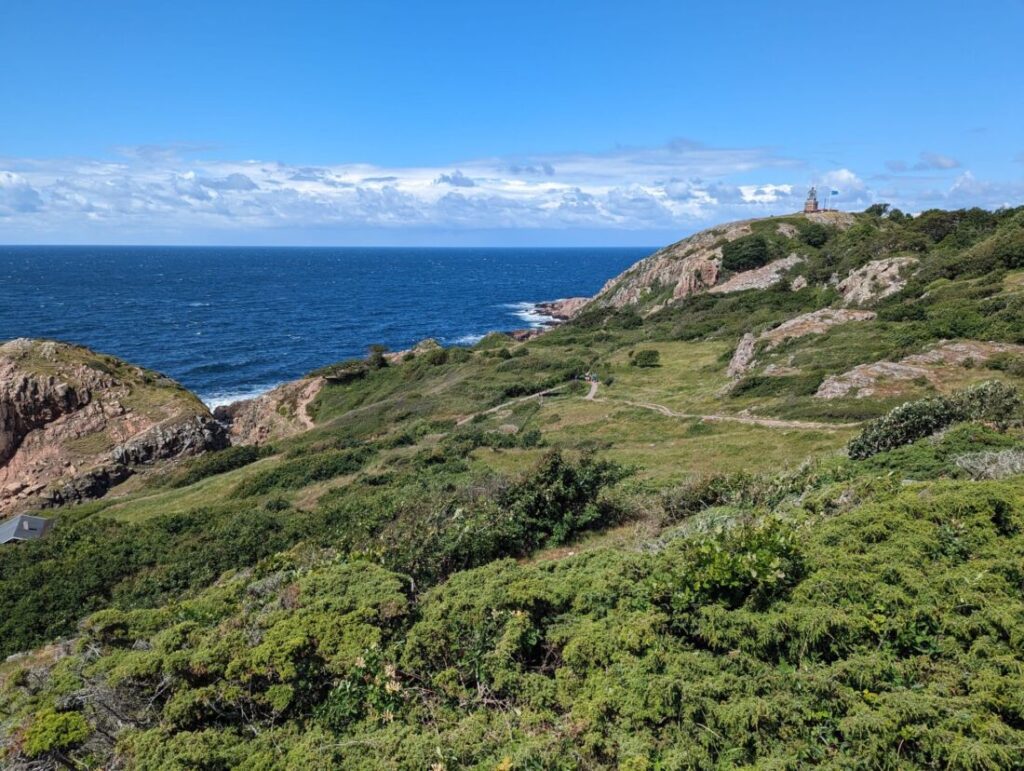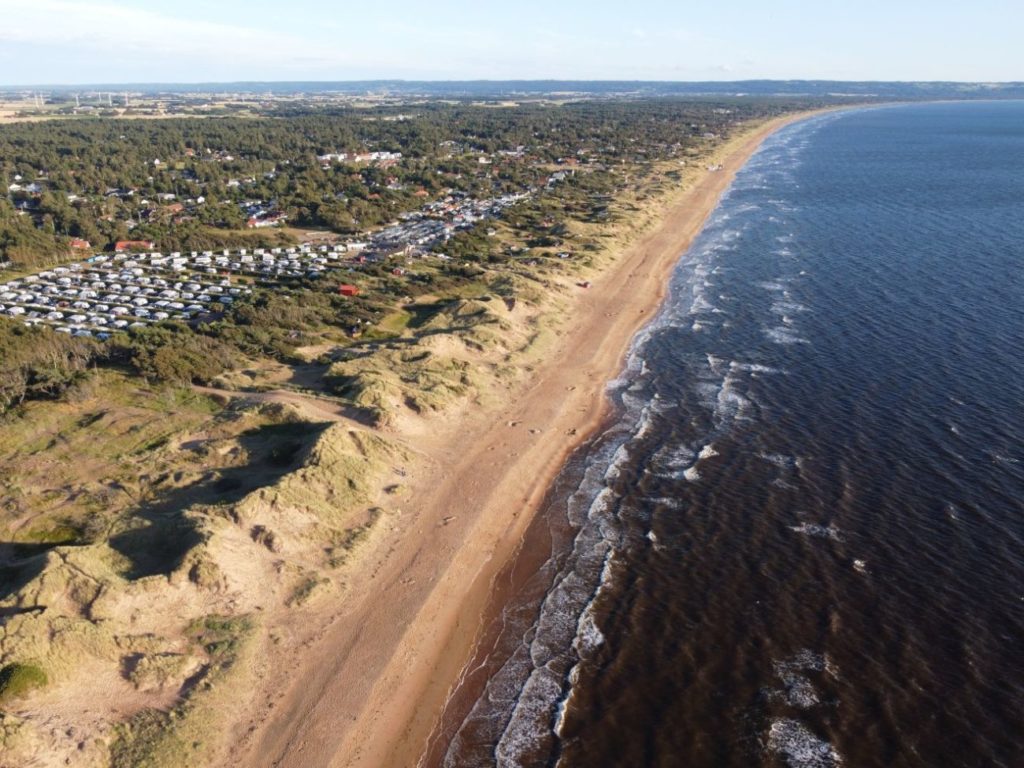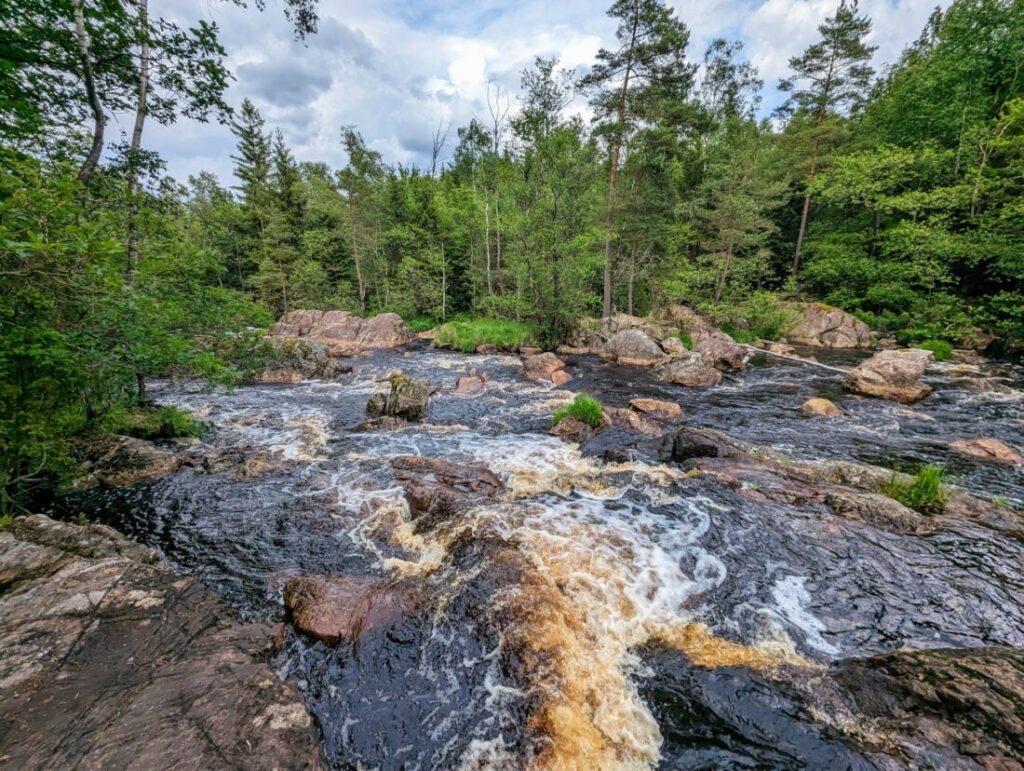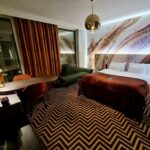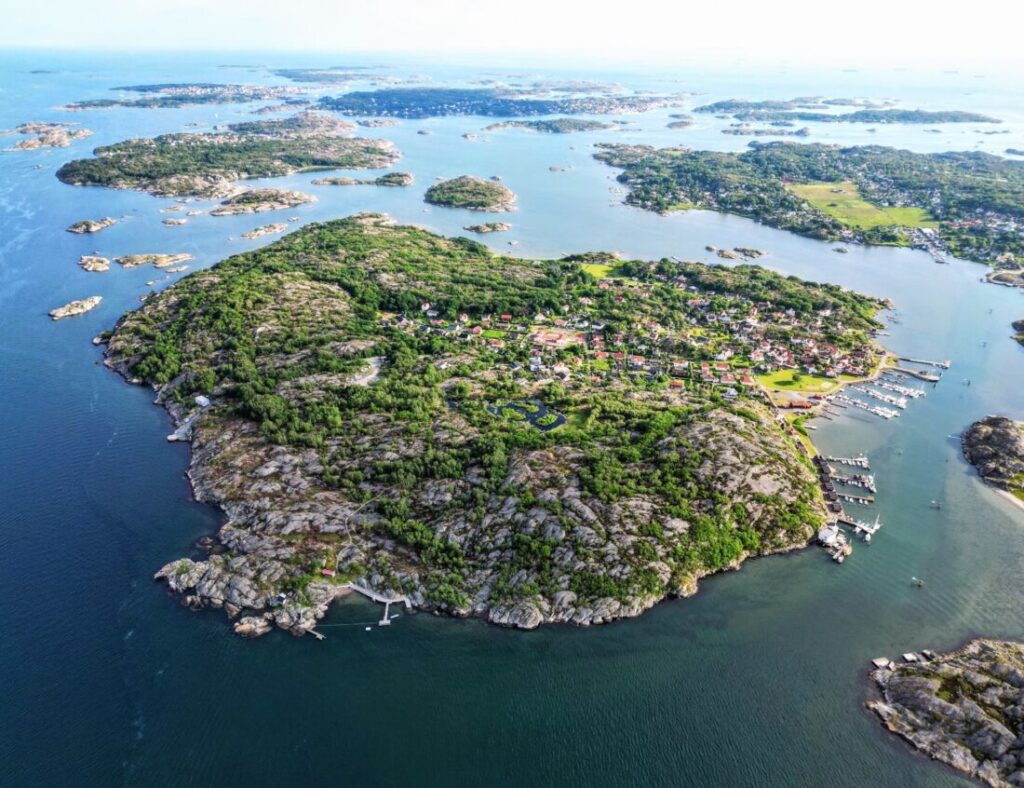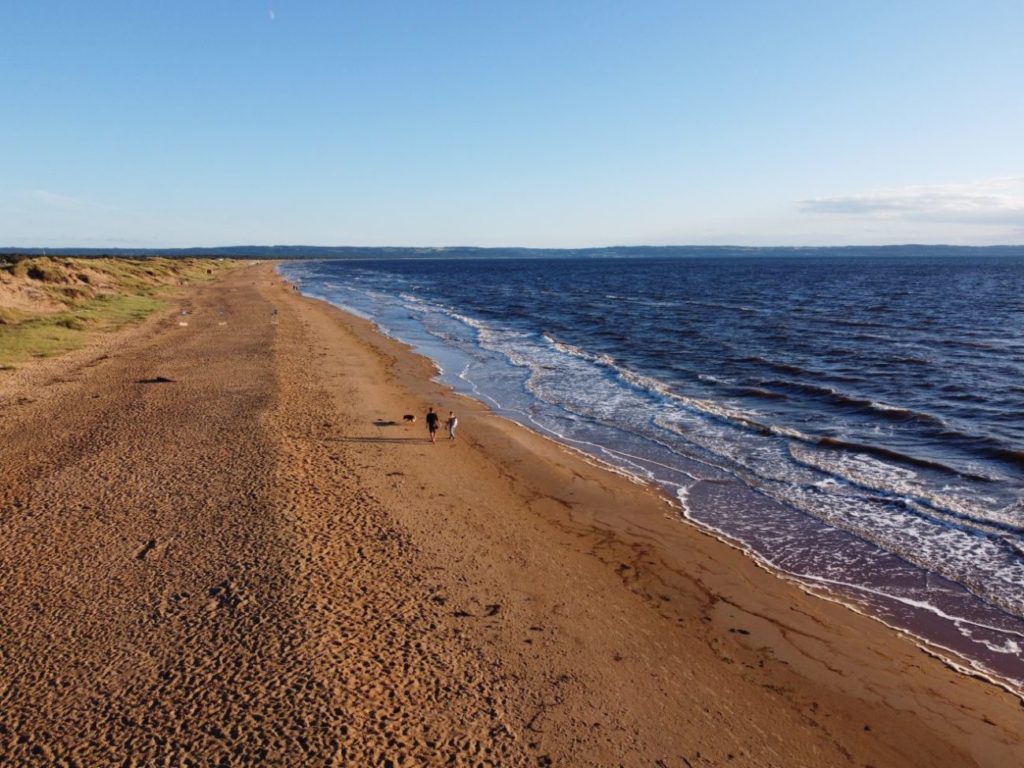During a southern Sweden itinerary, you will visit the land of untouched nature, lakes, forests and, of course, moose. There are said to be over 96,000 lakes throughout Sweden and over 200,000 islands, many of which are barely larger than a few square meters. What makes Sweden so special is its tranquillity and remoteness. Sweden – incidentally the largest country in Northern Europe – is almost 1.5 times the size of Germany, but has only about an eighth of the population. This shows that it is relatively easy to find places away from civilization where you can be alone with nature. It is also fitting that almost 70% of Sweden’s land area is covered by forest. In comparison, in Germany it is only a meagre 32%.
These forests are home to a wide variety of wildlife, including moose, wolves and bears. The country is home to numerous national parks and nature reserves, which help to protect the unique flora and fauna. Sweden is not a country of spectacular superlatives like neighboring Norway. There are no world-famous rocky peaks or unique fjords to discover here.
Southern Sweden Itinerary – Our Route
The southern sweden road trip starts in Malmö, which can be easily reached by plane or by car from other europe countries. It takes you up north along the west coast before heading inland at the level of Lake Vättern. You cross the Småland region and take a trip to the island of Öland, which lies on the east coast of Sweden in the Baltic Sea.
From there, you cycle along the south coast past idyllic coastal towns back to the starting point in Malmö. If you have more time, take a detour to the capital Stockholm.
You can find the route, highlights, hotels and campsites on our Google Maps map for the southern Sweden road trip.
Best time to travel
Midsummer from July to August is clearly the best time to visit. If you want a quieter time, then switch to spring or fall.
What to expect in Southern Sweden
- Fantastically beautiful beaches, uncrowded small towns and impressive landscapes
- Around 96,000 lakes (almost 9% of Sweden’s surface consists of water)
- With a bit of luck, you might see free-roaming moose here
What you should look out for
Although Sweden is in the EU, it does not have the euro, but Swedish kronor. Don’t worry, you can pay everywhere (even small amounts) by card.
Wild Camping
Similar to Norway, everyman’s right applies here. But officially only for hikers with tents. However, wild camping with a camper is usually tolerated.
Arrival by plane
The most practical option is to fly to Copenhagen Airport (CPH) in neighboring Denmark. Alternatively, you can fly to Stockholm (ARN). There are direct flights to both airports.
Arrival by car
You can travel to Malmö by car through Denmark via two toll bridges (Öresund Bridge & Storebælt Bridge). Alternatively, there is a ferry from Rostock to Trelleborg in Sweden.
Road Trip Southern Sweden – The Itinerary
Day 1 – Discover Malmö
The southern Sweden road trip starts in the beautiful city of Malmö. The top attraction in Malmö, the third largest city in Sweden, is without a doubt the pretty old town. If you start from Stortorget (the central square), you will immediately see the old town hall and the impressive Apoteket Lejonet. This historic pharmacy was built between 1895 and 1900 and is worth seeing both from the outside and the inside. Malmö City Hall was built as early as 1547, but only received its beautiful Renaissance façade in 1860.
If you walk from Stortorget to Lilla Torg (the small market square), you can not only stop off at various restaurants or store in nice boutiques, but also marvel at the pretty half-timbered houses. A particular highlight of Malmö (in the truest sense of the word) is the iconic Turning Torso, the tallest building in Scandinavia, which impresses with its modern architecture. Unfortunately, it can only be viewed from the outside.
Don’t miss a visit to St. Peter’s Church, the oldest church in the city with its Gothic architecture. Finally, you should relax at Västra Hamnen, a modern district with beaches and fantastic views over the Öresund.
Accommodation recommendation in Malmö
Hotel
The modern Best Western Hotel Royal is centrally located in the old town.
– Great breakfast
– Comfortable rooms
– central location
Day 2 – Visit the student city of Lund
After a twenty-minute drive from Malmö, you reach the neighboring town of Lund. It is tiny, very pedestrian-friendly and has a hip and cozy atmosphere thanks to the internationally renowned Lund University, which attracts a lot of students to the city.
Lund is best explored on foot or by bike and is like a smaller, nicer version of Malmö – with modern cafés and history museums (e.g. the Museum of Cultural History) displaying interesting exhibits from around the world.
Pay a visit to the over 900-year-old cathedral to take a look at its fabulous astronomical clock. In summer, the botanical garden is the perfect place for a relaxing stroll.
Accommodation Recommendation
Campsite
Lomma Camping is located directly on the coast. You are right by the sea and surrounded by a nature reserve.
Hotel
Millas Villa* is located not far from the train station in a historic villa dating from 1927.
The Millas Villa offers a beautiful ambience in a perfect location.
– Beautiful furnishings
– Great garden
– central location
Day 3-4 Helsingborg and Kullaberg
Helsingborg is a charming coastal town less than 60 km north of Lund. Here you should visit Sofiero Castle, which is known for its beautiful gardens and exhibitions. Climb the medieval Kärnan Tower to enjoy a magnificent view of the city and the Öresund. Stroll along the beach promenade and explore the charming city center with its cute cafés and boutiques.
You can also take a trip to the Fredriksdal open-air museum, where historic buildings and gardens are on display. If you have a little more time, you can take the ferry to Helsingør in Denmark to visit the famous Kronborg Castle.
A little further north, at the tip of a narrow headland, lies the impressive Kullaberg nature reserve. Here you can enjoy the numerous hiking trails that lead through dense forests and along the breathtaking coastline. The steep cliffs also offer great opportunities for climbing.
At the very top is the small but beautiful Silvergrottan (Silver Grotto), which can be entered free of charge. It is only a few meters deep, but the way there is very adventurous.
Accommodation Recommendation
The Vault Hotel* looks super stylish and has a great breakfast.
– Location on the historic square
– Extensive and delicious breakfast
– Sauna and gym available
Day 5-7 Halmstad and the West Coast
The varied landscape around Halmstad and the west coast of Sweden is part of the Halland region and consists of sandy beaches, lush forests, towering dunes and several waterfalls. The region is nicknamed the “Swedish Riviera” because it has miles of sandy beaches, popular bathing spots and the best conditions for surfing.
The first beach on the route is the beautiful Mellbystrand, the longest beach in Sweden at 12 km. A little further north is Halmstad, the largest city in the region and the perfect starting point for discovering the many sights in the area. The city is a particularly good base for active vacationers, as several hiking and cycling trails pass by here. The Kattegattleden, Sweden’s first national cycle path, runs through Halmstad (and the whole of Halland), connecting Gothenburg in the north with Helsingborg in the south.
Danska Fall is a natural highlight worth seeing inland. Here you can discover a small waterfall on a hike through an impressive nature reserve. On the coast, just 15 minutes from Halmstad, is one of Sweden’s most beautiful beaches. Tylösand beach is 10 km long and forms a unique backdrop with its green dunes. The shallow water is ideal for a day at the beach with the family. Dogs are officially prohibited on the beaches in summer, but everyone (Swedes) takes their four-legged friends to the beach.
The Haverdal nature reserve is not far from here, right on the coast. There you will find a dense beech forest and Sweden’s highest dune (Lynga Sanddyn). The area is very popular with hikers and cyclists. On the way towards Gothenburg, you will pass Varberg. The charming town is a popular summer destination with over 2 kilometers of sandy beaches and is known as a Swedish surfing mecca. Varberg’s landmark is the elegant Moorish-style cold bathhouse, which stands on stilts in the sea.
Accommodation Recommendation
The Halmstad Plaza* is very centrally located & is modern and as good as new.
– Comfortable rooms
– Delicious food
– nice rooftop bar
Day 8 – Explore Gothenburg
Hospitable and relaxed Gothenburg is the second largest city in Sweden and offers up-and-coming trendy districts, several Michelin-starred restaurants and a lively cultural scene. One of the reasons for this is that most of the major trade fairs and events take place here rather than in the capital Stockholm.
Gothenburg is a very pedestrian-friendly city, with most attractions within easy walking distance. Be sure to visit the central old town district of Haga with its many cafés, boutiques and old wooden houses in 19th century style. Haga is cozy, quiet and very authentic. Visit Café Husaren on Haga Nygata street for a fika (coffee break) and one of Sweden’s biggest cinnamon buns.
Just outside the city is Liseberg , an amusement park that is particularly popular with children. If you want to experience a little more nature, then head to the Saltholmen ferry terminal (by car or better still by public transport). There you can use numerous ferries with a public transport ticket to explore the many impressive archipelago islands. Archipelagos are rocky, small islands that often appear in groups of several hundred, which is why they are often called archipelagos.
Accommodation Recommendation
Camping: The Liseberg campsite is located 15 minutes outside the city directly by the sea at .
Hotel: The chic Hotel Royal* dates back to 1852 and is very centrally located.
Day 9-11 Discover Astrid Lindgren’s Småland
Today we head to the Småland region, probably Sweden’s best-known region. You could say that Småland is typically Swedish. In Småland you can experience the idyll from Astrid Lindgren’s stories for yourself, as it is the home of Michel from Lönneberga and Pippi Longstocking.
Småland may mean “small country”, but thanks to its vast, beautiful landscape, thousands of lakes and impressive east coast, there is plenty to see here. There are great hiking trails, picturesque villages with typical red wooden houses, 4 national parks and 400 nature reserves.
An ideal starting point for hikes and excursions in Småland is the town of Jönköping, which is located directly on Lake Vättern, the second largest lake in Sweden. In Jönköping, you can visit the Husqvarna Museum, which depicts 400 years of industrial history. Steep cliffs, deep forests and lively towns line the southern shores of Lake Vättern. Castle ruins, old villages and historic iron forges on the shores of the lake bear witness to Småland’s long history. From the ferry port of Gränna, you can cross over to the island of Visingsö. It’s a wonderful place to cycle around, as there is very little car traffic here.
On the north-western shore of the lake lies Tiveden National Park, which offers truly spectacular hikes through its rocky lake landscape. The park is relatively small, but combines different types of landscape and in good weather you can even swim here on small stretches of lake beach.
Åsnen National Park is located in the south of Småland. Åsnen is simply incredible, it stands for wilderness, water, over 1,000 islands and complete silence. 75% of the national park consists of water and you can explore the numerous small and large islands perfectly by canoe. But there are also some beautifully laid out hiking trails to discover here.
Accommodation Recommendation
Campsite: Beautiful, small campsite located directly on Lake Vättern.
Hotel: The Elite Stora Hotel* is located in the old town in a 19th century building.
Day 12 – Kalmar and the Island of Öland
On the way to the island of Öland, you will inevitably pass Kalmar. Although the town has just under 40,000 inhabitants, it still has a number of sights and activities to offer. Kalmar was founded in the Middle Ages and looks back on a thousand-year history as a Nordic center of power and trade. This historical significance can be seen in the impressive Kalmar Castle. You can explore the castle as part of a guided tour or on your own.
Kalmar is partly built on islands, the largest of which is called Kvarnholmen. The city center of Kalmar has been located there since the 17th century. It is surrounded by a city wall and consists largely of historic buildings, which you can visit on a stroll through the city.
There are several beaches in Kalmar and you can even go swimming in the middle of the city. If you want a little more nature, then you will find the Stensö peninsula three kilometers to the south with beautiful beaches and a beautiful natural backdrop for walking and cycling. You can then cross the 6 km long Öland Bridge to reach the island of Öland off the east coast of Sweden.
Öland is the second largest island in Sweden and has been used as the summer residence of the Swedish royal family for over a hundred years. The island stretches 137 kilometers from north to south and measures a narrow 16 kilometers at its widest point. Öland is also known as the island of the winds, as evidenced by the numerous small windmills dotted around the island.
The south of Öland is dominated by almost treeless vegetation, the so-called Stora Alvaret. This is a moderately overgrown and extremely flat limestone plateau on which there is only moderate growth. In contrast, the northern tip of the island is heavily forested in places. There is a lighthouse in the far north (as well as in the south) and there are some beautiful hiking trails.
The capital Borgholm is located roughly in the middle of the island and is not really that attractive in itself. However, the ruins of Borgholm Castle just outside are worth a visit.
Accommodation Recommendation
Campsite: Böda Hamns campsite is idyllically situated directly behind the dunes with access to the beach.
Hotel: This cozy country hotel* has a large garden and even a pool.
Day 13-14 – Along the south coast back to Malmö
Today’s stage takes you along the south coast back to Malmö. Take at least 2 days for this stage, otherwise it will be too much driving. There are numerous picturesque villages along the way that you should pay a visit to, such as Simrishamn, Kivik and Tosteberga.
Ystad is a particularly beautiful place. The town is particularly popular with crime thriller fans, as the well-known Wallander novels are set here. Ystad is characterized by low, often only one-storey houses from the 19th century and has a very picturesque old town (Gamla Stan) to offer. The reason for the comparatively old houses is that the town was one of the first in Sweden to have a voluntary fire department. As a result, most of the buildings have survived the test of time. There are beautiful beaches just outside the city that are perfect for swimming.
A little east of Ystad you will find Ales Stenar, the Stonehenge of Sweden. Here you can experience a ship settlement consisting of 59 rocks. A ship’s setting is a stone setting that resembles the outline of a ship and often marks graves. Archaeologists believe that the stones were erected during the Viking Age in the years 800-1000. There is no entrance fee and you have a great view of the surrounding area from the small hill.
Accommodation recommendation
Campsite: Nybrostrand Camping is located directly behind the dune on a beautiful beach.
Hotel: At Ystads Gamla Vattentorn* you sleep in a converted water tower.
We hope you enjoyed our road trip in southern Sweden. If you have any questions or further tips, please leave us a comment!


